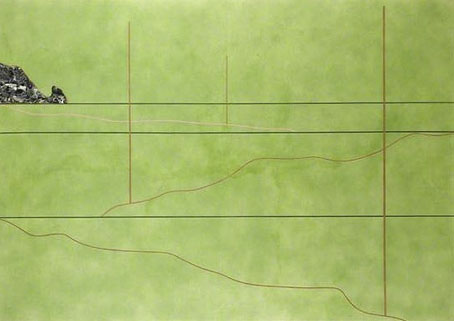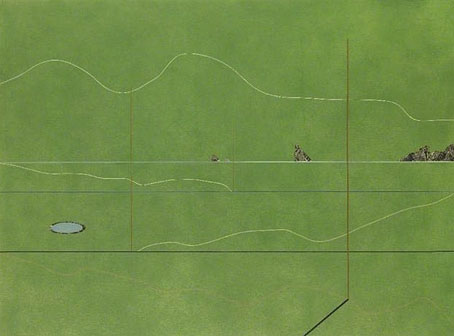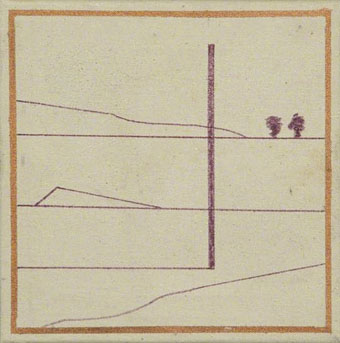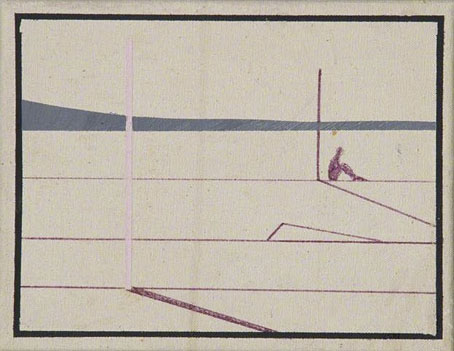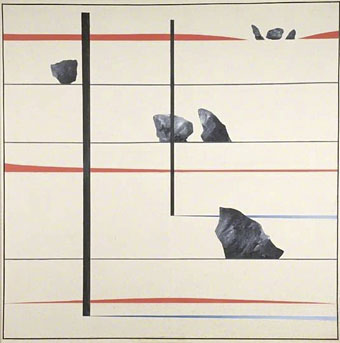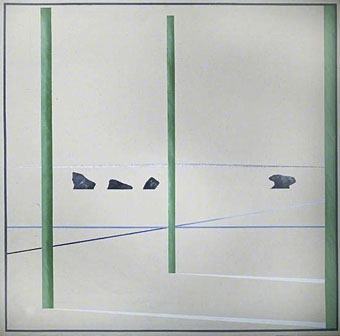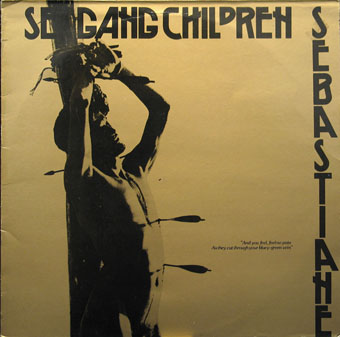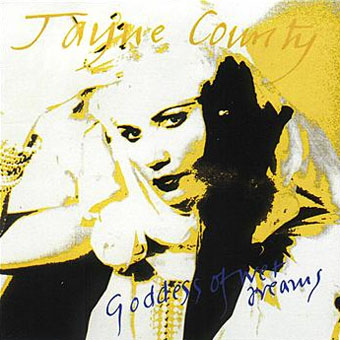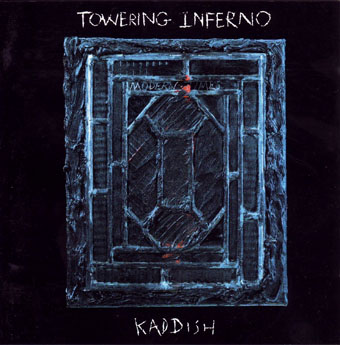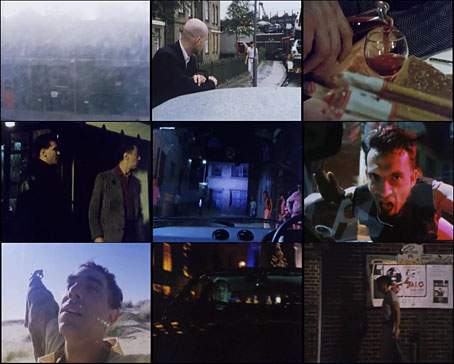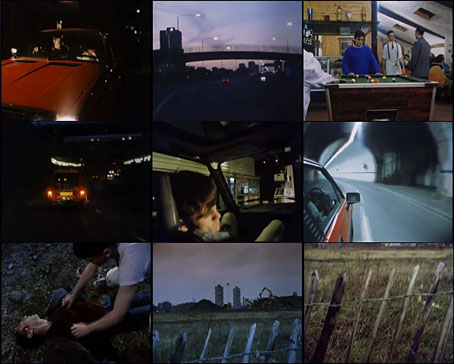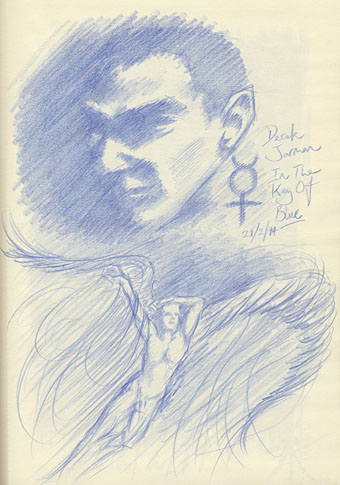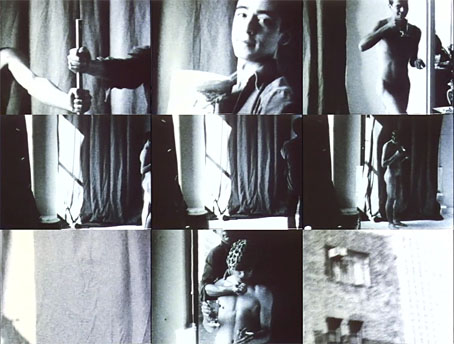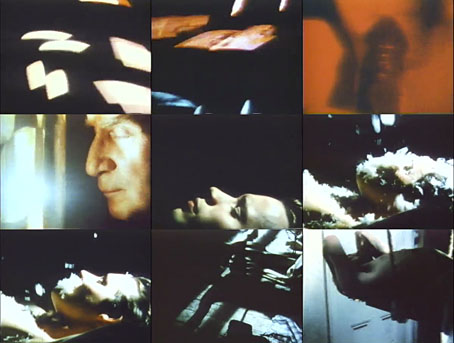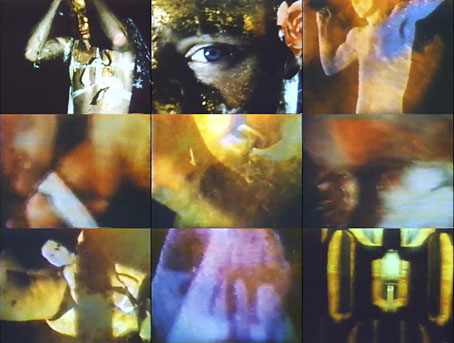Landscape with Marble Mountain (1967).
1968 – The Lisson Gallery
I have been painting landscapes fairly consistently since I left school, and during that time they’ve changed a great deal. At first they were sparked off by holidays with Aunt Isobel at Kilve in North Somerset. I painted the red-brown earth and dark green of the Quantock Hills, which are at their brightest under the stormy grey skies which blow up over the Bristol Channel. In these paintings there are megaliths and standing stones and clumps of beech trees. By 1965 this has all changed. Oil paint is out. Aquatec, the new acrylic paint, in. The canvas is no longer rough brown flax, but a smooth white cotton duck. The use of rulers and masking tape produces a metrical precision, and replaces improvisation.
I began a series of landscapes which were larger—you have to paint large at the Slade or nobody notices. They have flat red grounds, blue skies, above eye-tricking imagery: Trompe l’oeil water, real taps, classical statues. The largest of these canvases, nine feet by seven, wins the Peter Stuyvesant award for painting at the Young Contemporaries show at the Tate in May 1967.
Since then things have changed again, and at my one-man show, my first one-man show at the Lisson, the canvases have become linear and perfectly balanced. There are no longer any figures or objects, and definitely no jokes. The canvases which are left raw resemble marble through which a grid of lines has been scored.
Derek Jarman, Dancing Ledge (1991)
I don’t have a book of Derek Jarman’s paintings so the pictures featured here—taken from the BBC’s collection of public artworks in Britain—are the only examples I’ve seen of his landscapes. These are surprisingly minimal compared to the richly textured Super-8 films he started making in the early 1970s, but then his painting—which is only one facet of his artistic output—went through several distinct periods. It’s notable that he mentions painting standing stones from an early age given their presence in the Avebury series below, and in his beguiling short, A Journey to Avebury (1971).
(Note: Landscape with Marble Mountain is shown on the BBC site as a portrait picture which would appear to be an error. I’ve taken the liberty of rotating the image anti-clockwise.)
Landscape with a Blue Pool (1967).
Landscape (no date).
Landscape II (no date).
Avebury Series No.2 (1973).
Avebury Series No.4 (1973).
Previously on { feuilleton }
• Derek Jarman album covers
• Ostia, a film by Julian Cole
• Derek Jarman In The Key Of Blue
• The Dream Machine
• Jarman (all this maddening beauty)
• Sebastiane by Derek Jarman
• A Journey to Avebury by Derek Jarman
• Derek Jarman’s music videos
• Derek Jarman’s Neutron
• Mister Jarman, Mister Moore and Doctor Dee
• The Tempest illustrated
• In the Shadow of the Sun by Derek Jarman
• Derek Jarman at the Serpentine
• The Angelic Conversation
• The life and work of Derek Jarman

